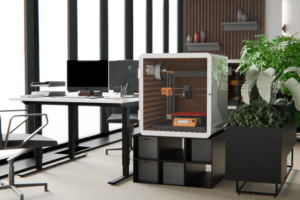
In the world of 3D printing, the quality and longevity of printed products directly depend on the conditions under which the 3D printer operates. One of the key aspects is creating an ideal 3d printer enclosure for your device. In this article, we will explore the five most important secrets that will help you protect your 3D printer and ensure its efficient and safe operation.
- Choosing the Right Materials for the Enclosure
Selecting the right materials is the first step in creating a 3d printer enclosure. The enclosure should have high thermal stability to protect the printer’s components from overheating. Acrylic or polycarbonate are excellent options because they are not only heat-resistant but also provide sufficient transparency to monitor the printing process. Additionally, these materials are relatively lightweight, which does not unnecessarily increase the load on the printer frame.
- Ensuring Proper Ventilation
To prevent overheating and maintain an optimal temperature inside the enclosure, an effective ventilation system is necessary. Use vents and fans to help circulate air and remove excess heat. A thermostat can automatically regulate the operation of the fans to maintain the desired temperature without unnecessary noise and energy consumption.
- Protection from Dust and Moisture
Dust and moisture are some of the main enemies of the mechanical and electronic components of a 3D printer. Make sure your 3d printer enclosure provides reliable protection against these factors. Using airtight seals and gaskets will isolate the printer’s interior from the outside environment, significantly improving the device’s lifespan and print quality.
- Accessibility and Ease of Maintenance
The 3d printer enclosure should not only be protective but also functional. Ensure easy access to the printer’s main components to facilitate maintenance and regular technical checks. A design with removable panels or doors allows quick and easy access to the printer’s interior for cleaning and repairs.
- Acoustic Isolation
3D printers can generate a significant noise level during operation, which is particularly relevant in residential areas or offices. Using materials with acoustic isolation properties helps reduce noise, making the printer’s operation more pleasant for the surroundings.
In conclusion, creating an ideal 3d printer enclosure requires attention to detail and an understanding of the basic principles for maintaining the technological and operational properties of the device. By following these recommendations, you can significantly improve the efficiency and lifespan of your 3D printer.
For more information on home printing improvements and other technical solutions, please visit our website.
